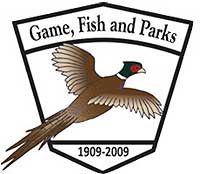2009 South Dakota Waterfowl Seasons Proposed

PIERRE, S.D. – -(AmmoLand.com)- Proposed seasons and limits for the upcoming duck and goose seasons in South Dakota will be on the agenda for a public hearing at next month’s meeting of the state Game Fish and Parks Commission.
South Dakota has four duck-season zones, each with its own season dates.
The commission’s proposed season for the Low Plains North and Middle Zones is Sept. 26 – Dec. 8. The two zones comprise most of the eastern half of South Dakota.
The commission is proposing a season of Oct. 10 – Dec. 22 for the Low Plains South Zone, which consists of parts of Gregory, Charles Mix, Bon Homme, Yankton, Clay and Union Counties.
The High Plains Zone, which contains all South Dakota counties west of the Missouri River and parts of several counties bordering the river on the eastern shore, would have a split season. The duck season would run Oct. 3 – Nov. 30, close for 7 days, then re-open Dec. 8 – January 14, 2010.
“We are regulated by the United States Fish and Wildlife Service on the number of days we can have for any given duck season,” explains GFP Terrestrial Chief Tom Kirschenmann. “We try to have the seasons open when there are good opportunities to hunt ducks. The split season in the High Plains Zone is an attempt to maximize opportunities for waterfowl hunters along the Missouri River and western South Dakota, too.”
As proposed by the commission, the daily limit for all hunting zones would be five ducks. A daily limit could include no more than two scaup, three wood ducks or two redheads. In addition, hunters would be able to have one hen mallard, or one pintail, or one canvasback in their daily limits.
The five-duck limit is contingent on Central Flyway states being allowed to use Hunter’s Choice regulations for the 2009-2010 hunting season. U.S. Fish and Wildlife Service officials are expected to make that determination this month.
If Hunter’s Choice regulations are rejected, then Adaptive Harvest Management liberal harvest regulations would likely be used for the 74-day Low Plains and 97-day High Plains seasons. Under that regulatory setup, those seasons would have daily limits of 6 ducks.
The GFP Commission has proposed a statewide season of Sept. 26 – Dec. 20 for light and white-fronted geese.
The proposed 2009 Canada Goose Season may be similar to last year. Under the proposal, Unit 1 would have an Oct. 1 – Dec. 20 season. Unit 1 is comprised of most of South Dakota, excluding the central counties along the Missouri River, Perkins, Bennett and parts of Custer and Fall River counties.
Unit 2 would have a Canada Goose Season from Oct. 31, 2009 – Feb. 12, 2010. Unit 2 consists of the central counties bordering the Missouri River, Perkins, and parts of Custer and Fall River counties.
Unit 3, encompassing only Bennett County, would have a Canada Goose Season of Jan. 9-17, 2010.
Daily limits would be three Canada geese, 20 light geese and one white-front goose. Possession limits for Canada and white-fronted geese would be twice the daily limit. Light geese possession would be unlimited.
Those who would like to provide written comments on the proposal may do so until 5 p.m. on Wed., August 5. Comments may be mailed to: Game, Fish and Parks Commission, 523 E. Capitol Ave., Pierre, S.D., 57501, or e-mailed to wildinfo@state.sd.us
All comments must include senders’ full names and addresses in order to become part of the public record.
Comments may be presented in person at the Aug. 6 GFP Commission meeting, which will be held in Mobridge at the Wrangler Inn during the 2 p.m. CDT public hearing.
About:
The purpose of the Department of Game, Fish and Parks is to perpetuate, conserve, manage, protect, and enhance South Dakota’s wildlife resources, parks, and outdoor recreational opportunities for the use, benefit, and enjoyment of the people of this state and its visitors, and to give the highest priority to the welfare of this state’s wildlife and parks, and their environment, in planning and decisions.
